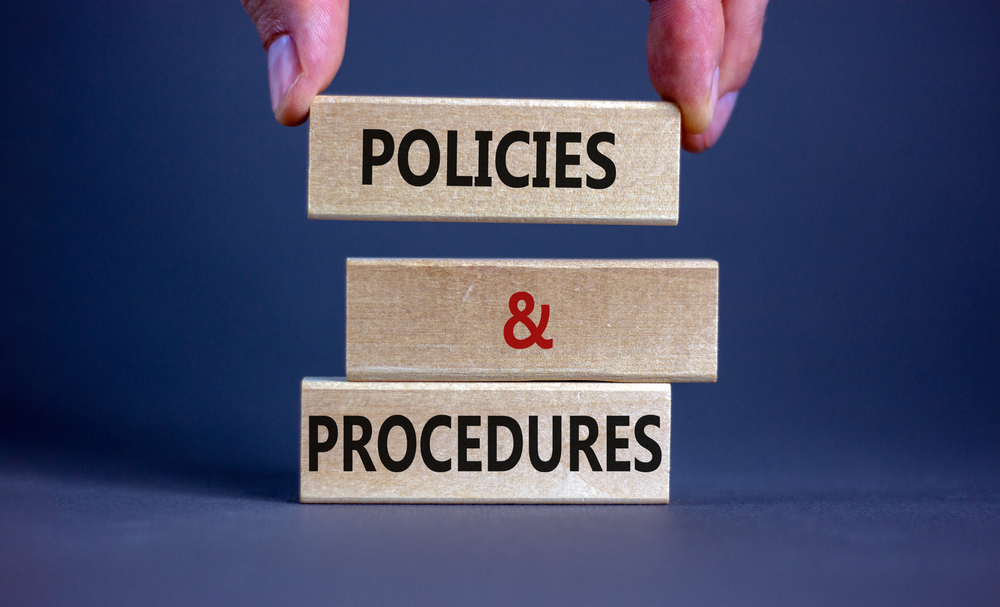Employee Relations: HR Guide
Good employee relations mean building strong ties between a company and its people. This helps employees feel happy, loyal, and engaged, which is great for the company.

It can even decrease turnover and create a positive work environment for everyone. Think of it as HR’s toolbox for building a happy and productive workplace.
Employee relations Benefits
Effective employee relations are like the secret sauce to a thriving workplace. Not just about fluffy feelings, it’s about unlocking benefits for both employers and employees. Think of it as an investment in your human capital, generating returns in happiness, productivity, and ultimately, success.
For Employers:
- Boost loyalty and retention: Happy employees stick around. With positive relations, you’ll see reduced turnover, saving time and money on recruitment and training.
- Unlock higher engagement: Engaged employees take initiative, spark new ideas, and push boundaries to achieve more. Effective employee relations foster a culture of ownership and enthusiasm, driving success.
- Reduce workplace conflict and drama: Let’s face it, conflict management saps energy and resources. A robust employee relations framework equips you to proactively address concerns and resolve issues early, minimising costly disruptions.
- Attract top talent: A reputation for positive employee relations is a magnet for talented individuals. In today’s competitive market, it’s a crucial advantage that sets you apart.
- Enhance brand image: Happy employees become brand ambassadors, spreading positive word-of-mouth and boosting your company’s reputation.
For Employees:
- Feel valued and respected: When your employer shows they care about you and your work, you feel like you belong and want to do your best.
- Experience job satisfaction: Positive employee relationships create a safe, supportive, and collaborative work environment, making work more enjoyable and fulfilling.
- Enjoy better work-life balance: Good employee relations mean less stress, more flexibility, and a happier you, both at work and home.
- Have a voice and growth opportunities: Open communication and feedback channels empower employees, leading to better decision-making and increased learning and development opportunities.
- Feel secure and protected: Transparent rules and fair conflict resolution create a safe and respectful workplace, building trust and security
Building a positive work environment
A positive work environment isn’t just a perk; it’s the cornerstone of a thriving organisation. A place where employees feel valued, engaged, and empowered to do their best work. Fostering such an environment requires a conscious effort, one that goes beyond ping-pong tables and free snacks. A space about building a foundation of trust, respect, and open communication.
Company culture

At the heart of a positive work environment lies a strong company culture. This encompasses the company’s values and mission, its guiding principles, and the overall vibe it projects. When employees understand and align with these values, they feel a sense of belonging and purpose.
Communication and feedback
Clear and consistent communication is crucial for building trust and fostering collaboration. Informed employees feel included and engaged, driving success towards shared goals. Open channels for feedback – upward, downward, and peer-to-peer – allow employees to feel heard and valued.
Policies and procedures

Workplace policies and procedures provide a clear framework for employee conduct and expectations. These should be transparent, fair, and consistently applied. Clear rules for everything, from clocking into taking time off, keep everyone happy and informed.
Respecting the law and the individual
Following the rules isn’t just mandatory, it builds a happy workplace. This includes ensuring fair compensation, respecting working hours, and providing adequate leave options. Reduce stress and build trust when everyone feels like they belong. That’s the power of inclusion.
Building engagement and motivation
Employee engagement goes beyond just appearing to work. Employee involvement is about feeling connected to the company’s mission, motivated to contribute, and excited about personal growth. Recognising and rewarding achievements, providing opportunities for growth and development, and offering flexible work arrangements are all crucial aspects of fostering engagement.
Imagine stepping into a workspace where smiles light up every corner and dedication hums in the air. That’s what happens when you invest in key areas. Building a positive work environment is a constant adventure.
We embrace listening, learning, and adapting to make it the best it can be. But the rewards – a happier, more engaged workforce and a thriving business – are well worth the effort.
SHRM underscores talent acquisition and retention as key challenges, further emphasizing the importance of strong employee relations in attracting and retaining talent.
Addressing employee concerns and conflicts
Reduce stress, build trust, and prevent problems. That’s the power of listening and addressing concerns early. Here’s how to weather the storm with grace and resolve:
Performance management
Open communication is key, especially to performance expectations and goals. Regular feedback and coaching create a positive and productive work environment.
Conflict resolution

Encourage employees to voice concerns about workload, relationships, and policies, so we can address them quickly and thoughtfully. Effective communication and active listening are your lifebuoys, while mediation skills act as your paddles. Reduce stress, build trust, and foster collaboration. That’s the magic of showing empathy and seeking solutions, even when the path ahead is unclear.
Discipline and termination
Discipline should be a documented process, applied consistently and fairly, with due process ensuring everyone gets a fair hearing. While termination should always be a last resort, when necessary, handle it with respect and professionalism. Offer support and resources during the transition, and remember, clear communication is crucial throughout the process.
Open communication, conflict skills, and fair rules create a positive and productive work environment. Remember, stormy seas are inevitable, but with the right tools and approach, you can keep your ship afloat and reach calmer waters.
Legal and regulatory considerations
A great environment, conflict skills, and legal compliance create a positive and worry-free workplace. Understanding these legal boundaries ensures your ship stays on course and avoids potential collisions.
Employment laws
A dizzying array of employment laws govern various aspects of employee relations, including discrimination, harassment, compensation, and workplace safety. Employment laws are vital to stay informed about relevant laws in your region and industry. This ensures you adhere to minimum standards and create a fair and equitable work environment for everyone.
HR compliance strategies
Solid policies and procedures are your anchors, ensuring HR compliance with legal requirements. Develop clear and accessible policies covering areas like anti-discrimination, harassment prevention, wage and hour compliance, workplace safety, and leave policies. Regular training and updates keep your crew informed and on board with these policies.
Seeking legal counsel

The legal landscape can be complex and ever-changing, so don’t hesitate to seek the expertise of legal professionals. Imagine dealing with a sensitive issue alone. Legal guidance prevents messy situations and protects everyone.
Reduce stress, boost morale, and prevent problems. That’s what following the rules brings to work.
Building strong employee relations
Strong employee relations aren’t just a perk; they’re the pillars upon which a thriving work community rests. Here are some employee relations strategies to build vital connections and cultivate a workplace.
Communication
Effective communication is the cornerstone of strong employee relations. This goes beyond emails and memos; it’s about creating open channels for dialogue, feedback, and ideas.
Encourage regular one-on-one meetings, team huddles, and open-door policies to ensure everyone feels heard and understood. Remember, communication is a two-way street – actively listen to employee concerns and proactively share company updates and decisions.
Empathy and respect

Treat every employee with empathy and respect, regardless of their role or background. Reduce stress, boost confidence, and unleash passion. That’s the power of feeling safe and valued in a truly inclusive environment. Be mindful of unconscious bias, offer opportunities for professional development and growth, and celebrate individual achievements.
Proactive approach
Don’t wait for conflicts to erupt before addressing potential issues. Take a proactive approach by regularly assessing employee engagement, satisfaction, and well-being. Conduct pulse surveys, host anonymous feedback sessions, and actively seek input from all levels of the organisation. This allows you to identify and address concerns early on, preventing small issues from snowballing into larger problems.
Utilise performance management software
HR software, specifically performance management software, can significantly improve employee retention by addressing key factors that drive talent to leave. Here’s how:
- Goal Setting and Feedback: Performance management software helps set clear, specific, and measurable goals aligned with individual and company objectives. Regular feedback sessions using the software platform create a continuous dialogue about progress and development, fostering a sense of purpose and direction.
- Recognition and Rewards: Recognition and rewards software facilitates timely and transparent recognition of achievements, boosting employee morale and motivation. Gamification features can further enhance engagement and create a competitive yet supportive environment.
- Career Visibility: Succession management software helps employees understand potential career paths within the organization.
- Data-Driven Decision Making: HR professionals can use remuneration software to analyze compensation data and identify potential biases or inconsistencies.
- Streamlined Processes: Automation of tasks like performance reviews and feedback documentation saves time and reduces administrative burden, allowing managers to focus on meaningful interactions with employees and address concerns promptly.
Continuous improvement
Building strong employee relations is an ongoing journey, not a destination. Embrace a culture of continuous improvement by regularly seeking feedback on your HR department policies and practices. Be open to adapting and evolving, adding new ideas and initiatives that support employee well-being and engagement.
Reduce stress, build trust, and unlock potential. That’s the magic of working together for constant improvement, where everyone feels happy and supported.
Key takeaways:
- Building a Positive Work Environment
- Addressing Employee Concerns and Conflicts
- Legal and Regulatory Considerations
- Best Practices for Building Strong Employee Relations
Building strong employee relations isn’t just a box to tick, it’s like building a sturdy mast for your ship. It steadies you against storms and propels you towards:
- Increased employee engagement and productivity
- Reduced employee turnover
- Improved employer brand and reputation
- Enhanced innovation and creativity: A culture of trust and open communication fosters collaboration and the exchange of ideas, leading to groundbreaking solutions.
Investing in strong employee relations isn’t just the right thing to do; it’s the smart thing to do.
 HR Core
HR Core 









